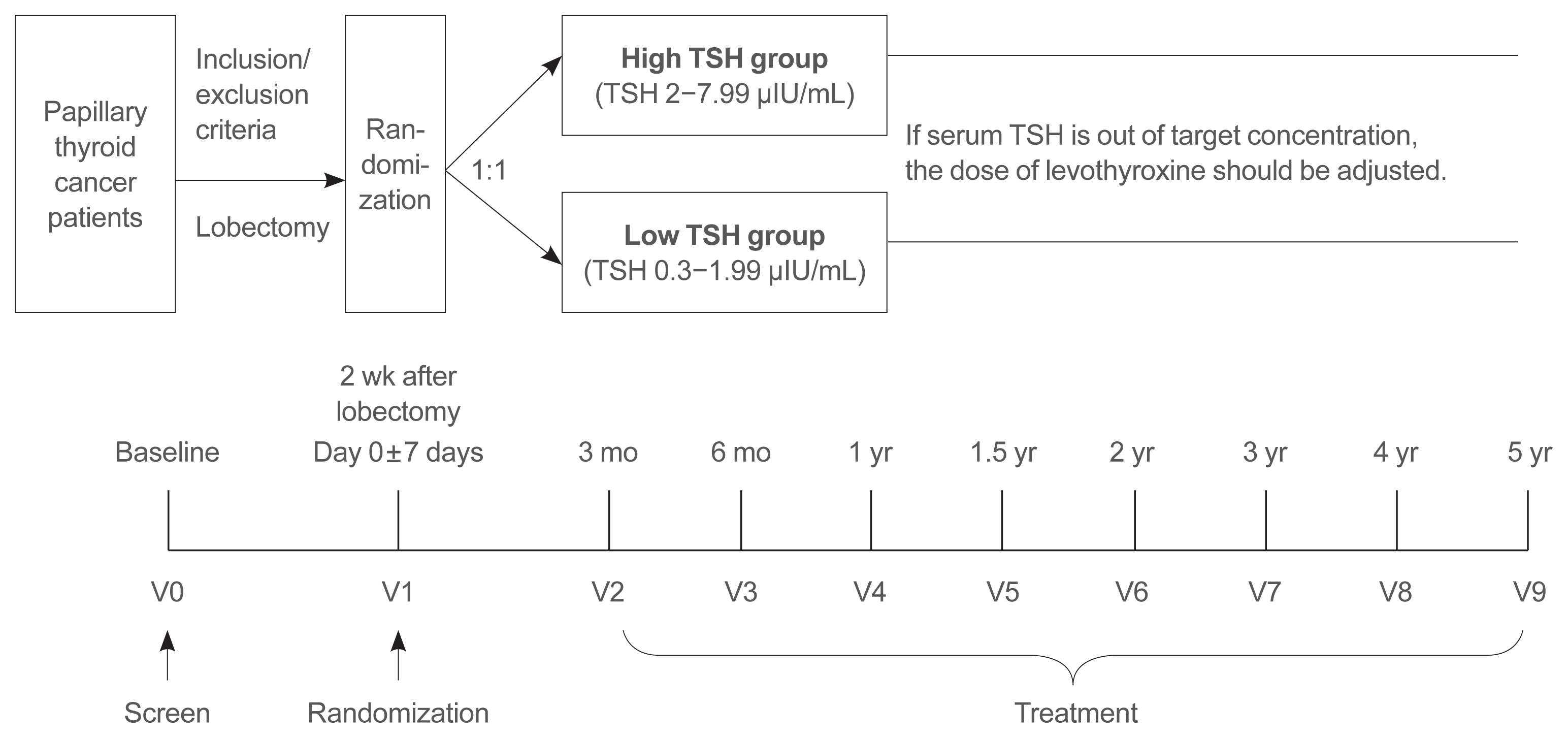1Center for Thyroid Cancer, National Cancer Center, Goyang,
Korea
2Department of Internal Medicine, Chungnam National University College of Medicine, Daejeon,
Korea
3Department of Internal Medicine, Seoul National University College of Medicine, Seoul,
Korea
4Department of Otorhinolaryngology-Head and Neck Surgery, Chungnam National University College of Medicine, Daejeon,
Korea
5Department of Surgery, Asan Medical Center, University of Ulsan College of Medicine, Seoul,
Korea
6Department of Internal Medicine, Chungbuk National University College of Medicine, Cheongju,
Korea
7Department of Otorhinolaryngology-Head and Neck Surgery, Chungnam National University Sejong Hospital, Sejong,
Korea
8Department of Internal Medicine, Dankook University College of Medicine, Cheonan,
Korea
9Department of Internal Medicine, Daegu Catholic University School of Medicine, Daegu,
Korea
10Department of Surgery, Ewha Womans University School of Medicine, Seoul,
Korea
11Department of Surgery, Gangnam Severance Hospital, Yonsei University College of Medicine, Seoul,
Korea
12Department of Internal Medicine, Konyang University Hospital, Daejeon,
Korea
13Department of Breast and Endocrine Surgery, Hallym University Sacred Heart Hospital, Anyang,
Korea
14Department of Surgery, Inje University Busan Paik Hospital, Busan,
Korea
15Department of Internal Medicine, Nowon Eulji Medical Center, Eulji University, Seoul,
Korea
16Department of Internal Medicine, Pusan National University Hospital, Busan,
Korea
17Division of Endocrinology & Metabolism, Department of Medicine, Thyroid Center, Samsung Medical Center, Sungkyunkwan University School of Medicine, Seoul,
Korea
18Department of Internal Medicine, Seoul Metropolitan Government Seoul National University Boramae Medical Center, Seoul,
Korea
19Department of Preventive Medicine, Seoul National University College of Medicine, Seoul,
Korea
20Cancer Research Institute, Seoul National University, Seoul,
Korea
21Convergence Graduate Program in Innovative Medical Science, Seoul,
Korea
22Department of Otorhinolaryngology-Head and Neck Surgery, Seoul National University College of Medicine, Seoul,
Korea
23Department of Surgery, Seoul National University Bundang Hospital, Seongnam,
Korea
24Department of Surgery, Seoul St. Mary’s Hospital, College of Medicine, The Catholic University of Korea, Seoul,
Korea
25Department of Internal Medicine, Daejeon Eulji Medical Center, Eulji University, Daejeon,
Korea
26Department of Surgery, Yonsei University College of Medicine, Seoul,
Korea




 PDF
PDF Citation
Citation Print
Print




 XML Download
XML Download